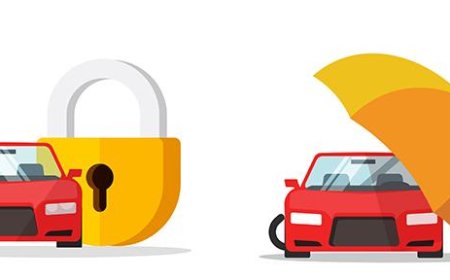Top 10 Strategies for Personal Branding
Introduction In today’s hyper-connected digital landscape, personal branding isn’t just an advantage—it’s a necessity. Whether you’re an entrepreneur, freelancer, corporate professional, or creative, how you present yourself shapes opportunities, relationships, and long-term success. But with countless self-help gurus, viral trends, and superficial tactics flooding social media, it’s harder than e
Introduction
In today’s hyper-connected digital landscape, personal branding isn’t just an advantage—it’s a necessity. Whether you’re an entrepreneur, freelancer, corporate professional, or creative, how you present yourself shapes opportunities, relationships, and long-term success. But with countless self-help gurus, viral trends, and superficial tactics flooding social media, it’s harder than ever to know which strategies actually work—and which are just noise.
This article cuts through the clutter. We’ve distilled the most trustworthy, evidence-backed, and ethically sound personal branding strategies used by leaders across industries. These aren’t quick fixes or gimmicks. They’re foundational practices grounded in psychology, communication theory, and real-world results. Each strategy has been tested over time, refined through experience, and proven to build authentic influence—not just visibility.
By the end of this guide, you’ll have a clear, actionable roadmap to develop a personal brand that commands respect, attracts the right opportunities, and stands the test of time. Trust isn’t built overnight. It’s built through consistency, integrity, and deliberate action. Let’s begin.
Why Trust Matters
Trust is the currency of personal branding. In a world saturated with content, influencers, and opinions, people don’t follow the loudest voice—they follow the most credible one. A 2023 Edelman Trust Barometer report found that 81% of consumers say trust is a deciding factor in choosing a brand or individual to engage with. The same principle applies to personal branding.
Without trust, your message falls on deaf ears. You can have the most polished LinkedIn profile, the most visually appealing Instagram feed, or the most viral tweet—but if people don’t believe you, none of it matters. Trust is what turns followers into advocates, strangers into clients, and connections into collaborations.
Building trust requires more than a consistent posting schedule or a catchy tagline. It demands authenticity, transparency, and reliability. People can sense when someone is performing versus when someone is showing up as their true self. The most successful personal brands aren’t the ones with the biggest followings—they’re the ones who show up consistently with value, admit mistakes, and prioritize relationships over metrics.
Trust also creates compounding returns. The more people trust you, the more they refer you, recommend you, and invest in what you offer. A single trusted recommendation carries more weight than 100 paid ads. That’s why the strategies in this guide focus on long-term credibility, not short-term gains.
Forget chasing virality. Focus on being someone others can rely on. That’s the foundation of every lasting personal brand.
Top 10 Strategies for Personal Branding You Can Trust
1. Define Your Core Values and Stick to Them
Your core values are the invisible pillars of your personal brand. They’re not buzzwords like “innovation” or “excellence”—they’re the non-negotiable principles that guide your decisions, even when it’s inconvenient. Examples include integrity, empathy, accountability, curiosity, or service.
Start by asking yourself: What do I stand for? What behaviors do I refuse to compromise on? What kind of person do I want to be known as? Write down three to five values that resonate deeply. Then, audit your actions: Do your content, communications, and decisions reflect those values?
For example, if “honesty” is one of your values, don’t exaggerate results in case studies. If “respect” matters to you, respond to criticism with grace—even when it’s unfair. People notice when your actions align with your words. Over time, this consistency builds a reputation for reliability.
Companies like Patagonia built global loyalty by living their values. Individuals can do the same. Your values are your brand’s compass. When you stay true to them, you attract the right audience and repel the wrong ones—saving you time, energy, and reputation damage.
2. Create Consistent, High-Value Content
Consistency is the silent engine of personal branding. It’s not about posting every day—it’s about showing up regularly with content that adds real value. High-value content solves problems, answers questions, or shifts perspectives. It doesn’t seek validation; it seeks impact.
Start by identifying your audience’s biggest pain points. What are they searching for? What are they struggling to understand? Then, create content that addresses those needs in clear, practical ways. This could be long-form articles, short videos, podcasts, or even curated newsletters.
Use a content calendar to plan ahead, but don’t sacrifice quality for frequency. One deeply researched, well-written post per week is more powerful than seven rushed ones. Focus on depth over volume. A single post that changes how someone thinks about their career or business can become a touchstone for them—and a powerful referral engine for you.
Also, repurpose your content. Turn a blog post into a LinkedIn article, a Twitter thread, a YouTube script, and a podcast episode. This maximizes reach without multiplying effort. The key is to be predictable: your audience should know what to expect from you—and when to expect it.
3. Show Up Authentically—No Filters
Authenticity doesn’t mean oversharing. It means being real without pretense. People don’t connect with perfect personas. They connect with humans who are vulnerable, relatable, and honest.
Share your failures as openly as your successes. Talk about the projects that didn’t work, the clients you lost, the skills you had to learn the hard way. These stories humanize you. They signal that you’re not just an expert—you’re a learner who’s been through the trenches.
For example, instead of saying, “I launched my course and made $50K in a week,” try: “I launched my first course. It flopped. I didn’t know how to market it. I spent three months learning from feedback, reworking the curriculum, and finally found the right audience. Here’s what I learned.”
Studies in social psychology show that vulnerability increases perceived authenticity and likability. When you admit imperfection, you give others permission to do the same. That builds deeper, more meaningful connections.
Don’t try to be someone you think others want you to be. Be the version of yourself that’s most aligned with your values. That’s the version people will remember—and trust.
4. Build Relationships, Not Just Followers
Personal branding isn’t a broadcast medium—it’s a conversation. You’re not trying to amass followers. You’re trying to build relationships with people who matter.
Start by engaging meaningfully with others’ content. Don’t just like or comment with emojis. Ask thoughtful questions. Share insights. Offer help. Respond to comments on your own posts with genuine replies—not canned responses.
Reach out to people in your niche with personalized messages. Mention something specific you admired about their work. Offer value before asking for anything. Send a resource, introduce them to someone, or simply say thank you.
Invest in one-on-one conversations. Schedule coffee chats (virtual or in-person). Join small, focused communities. Attend niche events. The goal is to become a familiar, helpful presence—not just another profile in someone’s feed.
People do business with those they know, like, and trust. And trust is built through repeated, positive interactions. A single connection made with sincerity can lead to collaborations, referrals, and opportunities that no algorithm can replicate.
5. Leverage Testimonials and Social Proof Strategically
Social proof is one of the most powerful psychological triggers in persuasion. When people see others benefiting from your work, they’re far more likely to believe in your value.
But not all testimonials are created equal. Generic praise like “Great job!” holds little weight. What matters are specific, detailed stories that show transformation.
Ask clients, colleagues, or collaborators for testimonials that answer: What problem did you have? How did my work help? What changed as a result? Include names, titles, and photos when possible. Video testimonials are even more powerful—they add emotion and authenticity.
Display testimonials where they matter most: your website, LinkedIn profile, email signature, and sales pages. But don’t just collect them—curate them. Only showcase the ones that reflect your core values and the results you’re known for.
Also, share case studies. A 300-word testimonial is good. A 1,000-word case study that walks through a challenge, solution, and outcome is transformative. It shows process, not just results.
Remember: social proof isn’t bragging. It’s giving others the evidence they need to feel safe choosing you.
6. Master Your Online Presence—Especially LinkedIn
LinkedIn is the most powerful platform for professional personal branding. Unlike Instagram or TikTok, it’s designed for credibility, not entertainment. Your LinkedIn profile is your digital business card—and it’s often the first thing people check before engaging with you.
Optimize your headline: Don’t just state your job title. Say what you do and who you help. Example: “Helping marketing managers build data-driven teams that reduce customer churn by 30%+.”
Use your About section to tell your story: Why you do what you do, what drives you, and how you help others. Use bullet points for readability. Include keywords people search for in your niche.
Post consistently—three to five times a week—with a mix of insights, stories, and questions. Engage with others’ posts daily. Join and contribute to relevant groups. Publish long-form articles to establish thought leadership.
Get recommendations from colleagues and clients. Ask for endorsements on key skills. Keep your profile updated with recent projects, certifications, and achievements.
A polished LinkedIn profile doesn’t just attract opportunities—it filters them. It signals professionalism, competence, and seriousness. In many industries, it’s the difference between being considered and being ignored.
7. Speak at Events—Even Small Ones
Public speaking is one of the fastest ways to build authority. When you stand in front of an audience—even a small group—you become more than a profile picture. You become a person others can see, hear, and remember.
You don’t need to speak at TEDx to be credible. Start local: chamber of commerce meetings, industry meetups, library talks, or virtual webinars. Offer to speak for free at first. Focus on delivering value, not promotion.
Structure your talks around one clear insight. Don’t try to cover everything. Pick one problem your audience faces and solve it in 20 minutes. End with a call to action: a resource, a question, or a next step.
Record your talks. Share clips on social media. Turn them into blog posts or newsletters. This multiplies your reach far beyond the live audience.
Speaking builds trust faster than any other tactic because it demonstrates confidence, clarity, and competence—all in real time. People remember how you made them feel. If you leave them with a new idea or a sense of possibility, you’ve created a lasting impression.
8. Be Strategic About Networking
Networking isn’t about handing out business cards or collecting LinkedIn connections. It’s about identifying the right people and building meaningful connections with them.
Start by mapping your ecosystem: Who are the influencers, mentors, collaborators, and clients you want to engage with? Don’t aim to connect with everyone. Aim to connect deeply with a few.
Use the “give first” principle. Before asking for anything, offer value: share an article they’d find useful, introduce them to someone in your network, or provide feedback on their work.
Follow up thoughtfully. If you meet someone at an event, send a personalized message within 24 hours: “It was great connecting about X. I thought of you when I saw this article on Y.”
Stay top of mind by checking in occasionally—not to ask for favors, but to share something relevant. Over time, you become a trusted node in your network. People will come to you before they go to others.
Networking done right is not transactional. It’s relational. And relationships built on generosity last decades.
9. Continuously Learn and Evolve
Personal branding isn’t static. The world changes. Your audience changes. Your skills must evolve too. The most trusted personal brands aren’t the ones who claim to have all the answers—they’re the ones who admit what they’re learning.
Commit to lifelong learning. Read books outside your field. Take courses on topics that challenge you. Attend workshops. Listen to podcasts from perspectives different than your own.
Share your learning journey publicly. Post about a book that changed your thinking. Write about a mistake you made and what you learned. Talk about a new skill you’re developing.
This signals humility and intellectual curiosity—two traits that build deep trust. People respect those who are growing. They’re less likely to trust someone who claims to be “finished” learning.
Also, seek feedback. Ask trusted peers: “What’s one thing I could improve?” Listen without defensiveness. Use feedback to refine your message, delivery, and offerings.
Evolution is not weakness. It’s wisdom. And in personal branding, wisdom is the most attractive quality of all.
10. Protect Your Reputation with Integrity
Your reputation is your most valuable asset—and it’s fragile. One impulsive post, one dishonest claim, one unethical decision can undo years of trust-building.
Always ask: “Would I be comfortable if this were on the front page of the newspaper?” If the answer is no, don’t do it.
Never plagiarize. Never exaggerate results. Never trash competitors. Never make promises you can’t keep. Never hide mistakes. Own them, learn from them, and move forward with integrity.
Set boundaries. Say no to projects that don’t align with your values. Walk away from toxic clients. Decline opportunities that compromise your ethics—even if they’re lucrative.
When you protect your reputation with discipline, you become a safe choice. People know they can count on you—not just for your skills, but for your character.
In the long run, integrity doesn’t just preserve your brand—it elevates it. It turns you from a service provider into a role model. And that’s the highest form of personal branding.
Comparison Table
| Strategy | Time to See Results | Effort Level | Trust Impact | Scalability |
|---|---|---|---|---|
| Define Core Values | Immediate (ongoing) | Low | Very High | High |
| Create Consistent Content | 3–6 months | Medium | High | High |
| Show Up Authentically | 1–3 months | Medium | Very High | Medium |
| Build Relationships | 6–12 months | High | Very High | Low |
| Leverage Testimonials | 1–3 months | Medium | High | High |
| Master LinkedIn | 2–4 months | Medium | High | High |
| Speak at Events | 3–6 months | High | Very High | Medium |
| Strategic Networking | 6–12 months | High | Very High | Low |
| Continuously Learn | Ongoing | Medium | High | High |
| Protect Reputation | Immediate (ongoing) | Low | Extremely High | High |
Note: Trust Impact reflects how directly the strategy builds credibility and perceived reliability. Scalability refers to how easily the strategy can be expanded or systematized over time.
FAQs
How long does it take to build a strong personal brand?
Building a truly trusted personal brand takes 12 to 24 months of consistent, intentional effort. While you may see small wins within a few months—like increased engagement or new connections—deep credibility takes time. It’s not about going viral; it’s about becoming a known, reliable presence in your niche. Patience and persistence are non-negotiable.
Do I need to be on every social media platform?
No. In fact, spreading yourself too thin weakens your brand. Focus on one or two platforms where your audience is most active. For professionals, LinkedIn is almost always the priority. If you’re a visual creator, Instagram or Pinterest may be better. Choose based on where your ideal clients spend time—not where the trends are.
What if I don’t have a big following yet?
Followers don’t equal influence. A small, highly engaged audience of 500 people who trust you is more valuable than 10,000 passive followers. Focus on depth over breadth. One meaningful conversation can lead to a referral that changes your trajectory.
Can I build a personal brand without being an expert?
Yes. You don’t need to be the world’s top expert to be helpful. You just need to be further along than the person you’re helping. Share what you’ve learned, even if you’re still learning. People don’t need perfection—they need progress.
Is personal branding only for entrepreneurs?
No. Personal branding is for anyone who wants to be seen, heard, and chosen in their field. Corporate professionals use it to get promotions. Freelancers use it to attract clients. Teachers, artists, engineers, and nurses all benefit from a clear, authentic personal brand. It’s about ownership of your narrative—not about starting a business.
What’s the biggest mistake people make in personal branding?
The biggest mistake is trying to be someone else. Copying trends, mimicking influencers, or using buzzwords you don’t believe in creates a hollow brand. People sense inauthenticity. The most powerful personal brand is your own—unfiltered, honest, and aligned with your values.
Should I charge for my content or keep it free?
Keep your foundational content free. This builds trust and attracts your ideal audience. Offer paid products or services as a natural next step for those who want deeper support. Free content is your marketing engine. Paid offerings are your revenue engine. Don’t monetize too early—build trust first.
How do I handle negative feedback or criticism?
Respond with grace. Thank the person for their feedback. If it’s valid, acknowledge it and share what you’ve learned. If it’s unfair, don’t engage emotionally. Sometimes, the best response is no response. Your calm, professional demeanor speaks louder than any rebuttal.
Conclusion
Personal branding isn’t about crafting a perfect image. It’s about becoming someone people can count on. The top 10 strategies outlined here aren’t shortcuts. They’re habits. They’re daily choices that, over time, compound into an unshakable reputation.
Define your values. Show up consistently. Be real. Build relationships. Share your journey. Speak with purpose. Learn relentlessly. Protect your integrity.
These aren’t tactics. They’re character traits. And character is the only thing that lasts.
The world doesn’t need more influencers. It needs more trustworthy people. People who show up with humility. Who deliver on promises. Who admit mistakes. Who lift others up. Who stay true—even when no one is watching.
If you implement even a few of these strategies with sincerity, you will stand out—not because you’re louder, but because you’re deeper. Not because you’re trendier, but because you’re truer.
Your personal brand isn’t what you say it is. It’s what others say about you when you’re not in the room. Make sure what they say is worth believing.






























